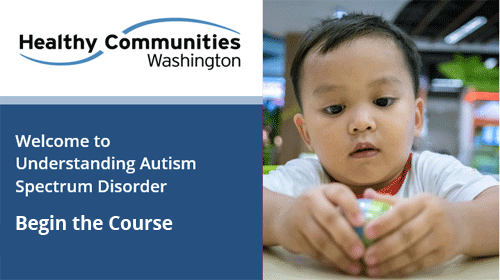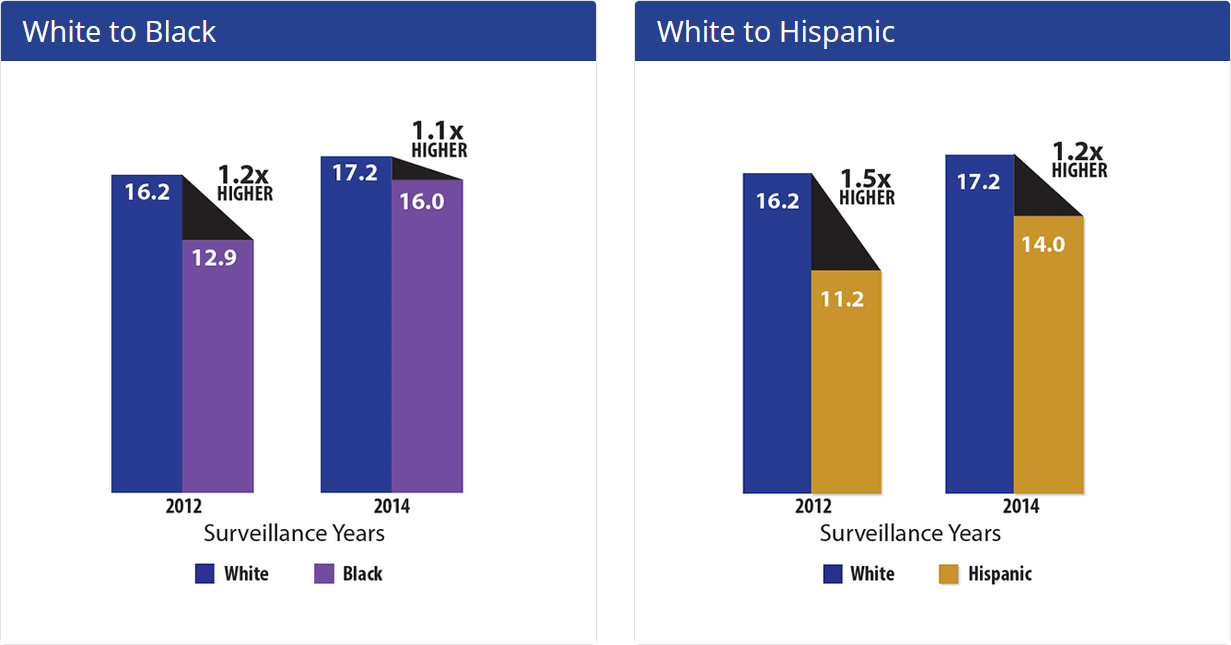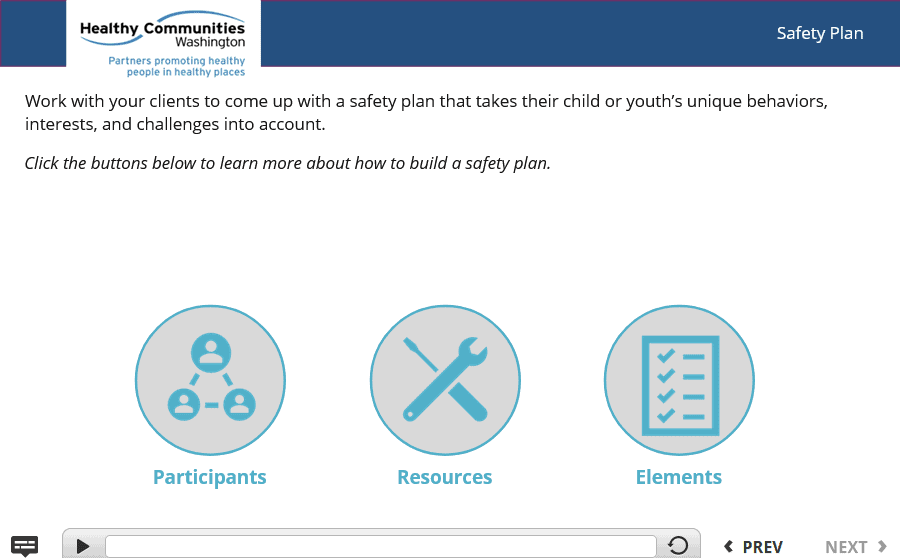The number of children who have been diagnosed with Autism has increased sharply in recent years—at least for some children.
White children in the U.S. are tested for Autism Spectrum Disorder (ASD) as a part of regular care. This means they can be diagnosed earlier and go down a road for intervention and services that tremendously helps both them and their families reach their fullest potential.
Hispanic or Latino and Black children, on the other hand, are less likely to be diagnosed with ASD than white kids. Hispanic children are 65% less likely to be diagnosed, and Black children 19% less likely, according to a study in the American Journal of Public Health.
A new project from the Washington State Department of Health aims to reduce those disparities and add support to vulnerable families in the state. They plan to use the help of community health workers (CHWs) through an online course called Understanding Autism Spectrum Disorder.
Understanding Autism Spectrum Disorder

“This project is really exciting! It gives CHWs a better understanding of what autism is and helps them build their network of resources to share with families going through diagnosis and afterwards. That will be fundamental in helping families in Washington State,” says Nikki Dyer, Family Engagement Coordinator in the office of Prevention and Community Health at the Washington State Department of Health.
Understanding Autism Spectrum Disorder was built by online training agency Talance, Inc., and is offered for no cost as part of Washington’s Community Health Worker Training Program. More than 2000 people from around the state have participated in the 10-week online blended learning program. It is designed to strengthen the common skills, knowledge, and abilities of community health workers. Past participants are eligible to enroll in any of the free Continuing Education Health Specific Modules, including Understanding Autism Spectrum Disorder.
Understanding Autism Spectrum Disorder “lets CHWs get a grasp of what kind of resources they have locally around diagnosis, referral, and how to navigate a family,” says Dyer. It also exposes CHWs to services for kids with Autism who have already been diagnosed through to transitioning to adulthood services.
“Transition’s a huge issue that has been largely unexplored and leaves a big gap for autistic youth and their families when making that leap to adult services,” Dyer says.
Early Autism Diagnosis
One of the main goals of the course is to encourage earlier and more equitable access to diagnosis. This is especially important for families who face health disparities because of race, ethnicity, and cultural needs.
“Pre-diagnosis is a chaotic time in a family’s life,” says Dyer.
Families might:
- Not be able to recognize the early signs.
- Feel confused and isolated when their child is diagnosed with ASD and immediately after.
- Suspect their child has autism but wait to get a diagnosis. Or, they may feel too overwhelmed by the reality of the diagnosis to know where to find services and supports.
Diagnosing ASD early can help families cope. Early interventions are also critically important to helping children with ASD develop social skills and improve their quality of life.
“Early diagnosis provides the best possibility to be proactive and provide the child with services to reach their fullest potential development,” says Dyer.
Health Disparities and ASD
Here’s where many Black and Hispanic or Latino families are left behind. If their children are never diagnosed, or diagnosed later in life, they miss out on these important support mechanisms and adjustments to help families and youth. Outreach campaigns to have all children screened for ASD can catch some of the people who fall through.

The number of white children diagnosed with ASD compared to Black and Hispanic children is much higher. Source: CDC.
Some communities have a cultural stigma or other expectations of childhood development. That can prevent early diagnosis and put a stop to families seeking a diagnosis even when their provider or child’s teacher may encourage it.
Working Across Washington
Dyer and her colleagues in the Children and Youth with Special Health Care Needs program knew of the challenges of supporting families in Washington.
“They turned their eyes toward CHWs and began investigating collaborative opportunities with the Department of Health’s CHW Training Program for developing training resources,” says Scott Carlson, Community Health Worker Training System Supervisor at the Washington State Department of Health.
CHWs work in the homes of families all around the state, and—importantly–in the most underserved areas. With the right kind of training, CHWs can make referrals to ASD specialists and provide other resources.

Family Navigators and Community Health Workers
“Family navigators” are healthcare workers who regularly support families with an ASD diagnosis. But—like CHWs—they don’t have a clear definition. It’s a catch-all term for someone who provides families with extra care coordination. There are no training requirements or standard services provided by family navigators.
The upshot: CHWs can be family navigators. They can use the skills provided through the Washington CHW program and through this training to serve families in a culturally and linguistically competent and relevant way.
“We would like to promote the CHW program by creating this course and making it open to partners who are doing peer mentoring and navigation for people with special health care needs, even if they are not trained CHWs,” says Dyer.
Doing so opens up employment possibilities for participants who want to be CHWs but might not know about the number of available jobs labeled as “family navigation.”
“We would also like to promote the program as a whole and encourage our partners who may receive access to this module without being a CHW to take the initial training in those basic skills.”
CHW Family Navigation Skills
People who participate in Understanding Autism Spectrum Disorder will gain skills that support families in many areas, including:
- Understanding what ASD is and its stages of severity
- Advocating for early testing and diagnosis through referring clients and providers
- Care coordination for connecting families to needed services, supports, and therapies. This is the case even outside of the healthcare field, specifically through a customized resource directory
So far, learner feedback has been overwhelmingly positive for the course. In a survey, 92% found it interesting and easy to follow. Another 95% were able to find ASD resources that were local and relevant to their jobs.
“This information will be applied immediately,” says Najja Brown, who recently completed the training. Brown works with ASD clients as part of her work through DSHS/DDA. “We will understand our clients better, be able to recommend resources/support groups, and make appropriate suggestions based on the information learned. We will also use the proper language when references to ASD.
“I know so much more than before. When I resume providing services, I will have a better understanding of my clients, whom are all ASD.”
Additional Training
Anyone interested in taking Understanding Autism Spectrum Disorder can learn more at Washington’s Community Health Worker Training website.
Dyer suggests participating in these courses as a “Family Navigation track”:
- Providing Social Support
- Immunizations Across the Lifespan
- Navigating Health Insurance
- Health Advocacy
- Social Determinants of Health & Disparities
- Depression, Anxiety, & Stress



